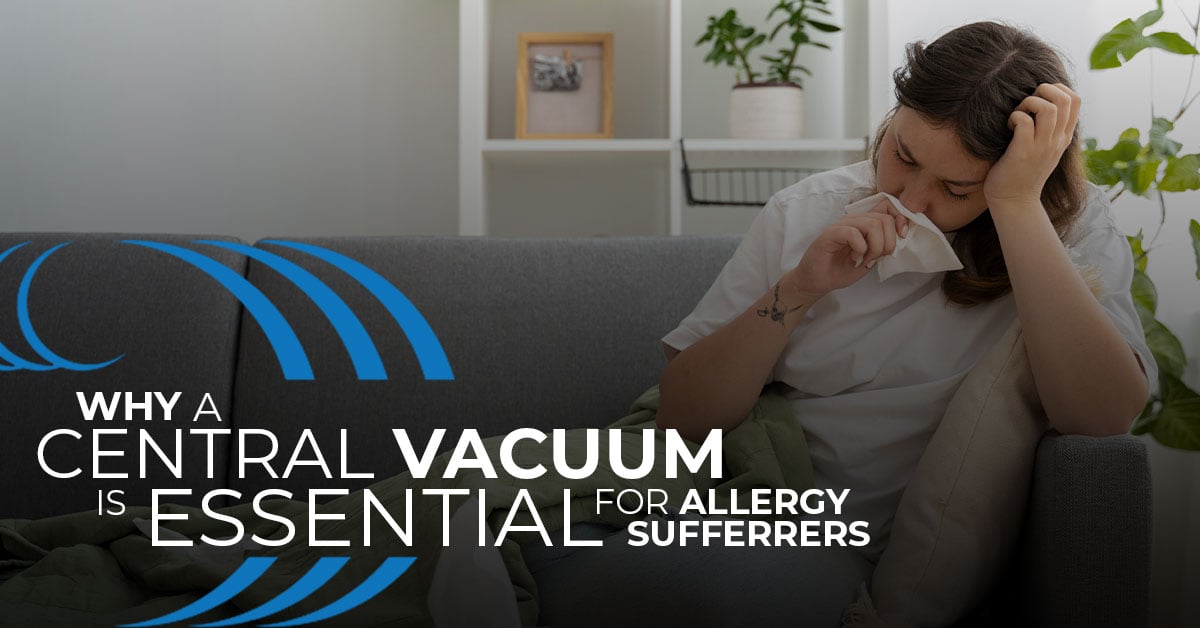
Boosting Productivity in Office Buildings with Central Vacuum
In today’s fast-paced work environment, maintaining a clean and organized office space is crucial for productivity. Office buildings often struggle with keeping their premises clean

Living with allergies can be challenging, especially when your own home seems to exacerbate the condition. Dust, pollen, and pet dander are some of the most common household allergens that can trigger uncomfortable symptoms. For individuals who suffer from allergies, maintaining a clean living environment is crucial. One of the most effective tools in helping to alleviate indoor allergies is a central vacuum system.
Central vacuum systems are designed to provide a thorough clean with minimal release of dust and allergens back into your living space. Unlike traditional vacuum cleaners that can often redistribute dust and allergens into the air, central vacuum systems extract the dirt, dust, mold, pollen, and pet dander out of your carpet and furnishings. This means that allergens are not just being moved around but are effectively removed from your living environment, providing Central Vacuum System Allergy Relief.
The benefits of Central Vacuum Systems for Allergies are numerous. First and foremost, these systems improve the overall cleanliness of your home. With their powerful suction and comprehensive cleaning reach, central vacuum systems can significantly reduce the amount of dust and allergens in your home.
Moreover, central vacuum systems are typically installed in garages or basements, away from your main living area. This means that the dust and allergens collected don’t get recirculated back into your home. Instead, they are transported out of your living space, resulting in Improved Air Quality with Central Vacuum Systems.
Reducing Allergens with Central Vacuum is not only about removing visible dust and dirt. It’s also about targeting invisible allergens that lurk in your carpets, furniture, and even the air you breathe. Central vacuum systems are equipped with highly efficient filtration mechanisms that can capture and contain microscopic allergens, preventing them from being released back into your indoor environment.
One of the key features to look for when choosing a central vacuum system is its filtration system. Many high-quality central vacuum systems feature HEPA Filtration, a type of filter that can trap a large amount of very small particles that other vacuum cleaners would simply recirculate back into the air of your home. HEPA filters remove particles like dust, dander, and allergens, making them an excellent choice for allergy sufferers.
For individuals suffering from allergies, a central vacuum system can significantly improve the quality of life. By effectively removing allergens from your living environment, these systems can help alleviate allergy symptoms and create a healthier home. Remember, the best way to manage allergies is to reduce exposure to triggers, and a central vacuum system is a powerful tool in achieving this goal.

In today’s fast-paced work environment, maintaining a clean and organized office space is crucial for productivity. Office buildings often struggle with keeping their premises clean

Central vacuums in animal shelters & vet clinic: Explore how these systems boost hygiene, efficiency, and air quality.

In the world of home entertainment, a home theater is a luxury that many homeowners dream of. It’s an immersive experience that brings the magic

A central vacuum system is a significant investment that promises convenience, powerful suction, and improved indoor air quality. However, choosing the right central vacuum hose
Our home automation products are at the forefront of technology, offering a blend of convenience, security, and efficiency. As a Homewave dealer, you’ll be part of a network transforming homes into smart, futuristic spaces.
Embark on this rewarding journey with us and leverage the power of innovative technology.
Please fill out this form and become a Homewave Dealer.